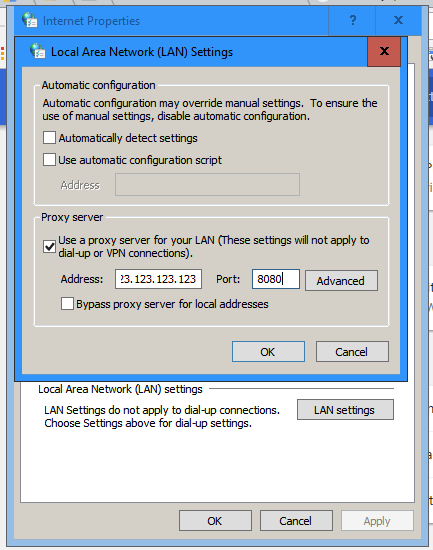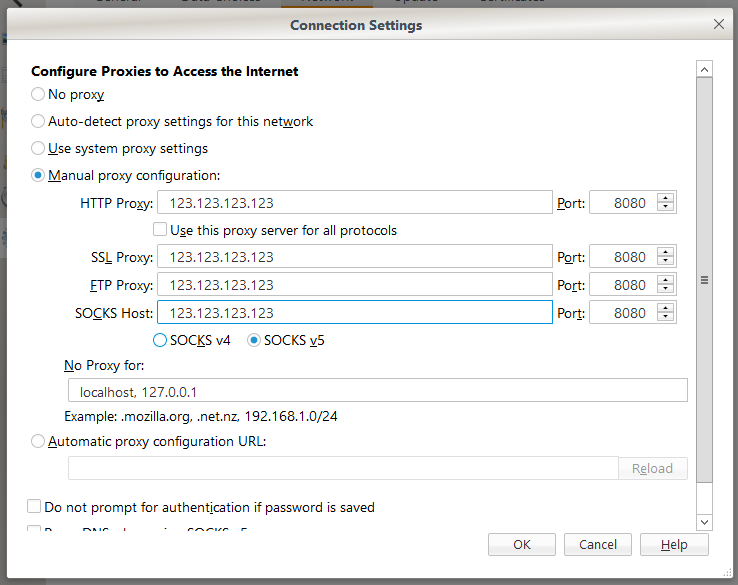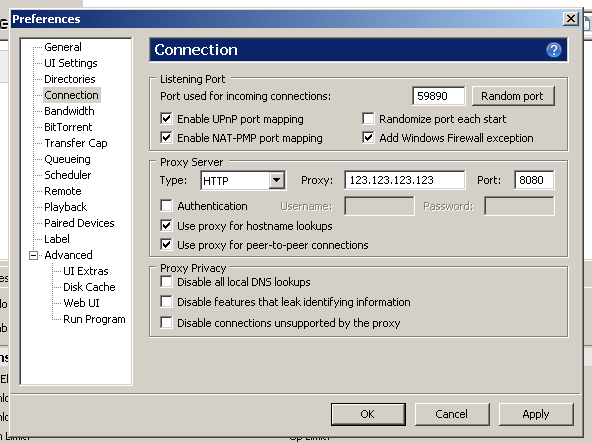Proxies seem pretty complicated but in reality they are simple to use. Most major web-browsers support the use of a proxy, as well as many other internet-based applications from internet-messaging apps to BitTorrent apps. There are even applications known as “proxifiers” that will allow you to use a proxy with software that doesn’t support proxies natively. Most software that has native proxy support will only support the use of one proxy at a time, however, there are also proxifier apps that allow you to use whole lists of proxies by either alternating use of the different proxies or by using different proxies for certain software applications.
First off, if you don’t know what a proxy is then you should probably read this article. But, to put it simply, a proxy server is just a remote computer that allows you to route certain internet traffic of yours through it. Proxies are different from VPNs because they only put specific software behind a proxy and not your whole computer, plus proxies have far less security and encryption – you can learn more about Proxies versus VPNs on this page. Generally, a proxy will be an IP address folowed by a colon with a port number and will look like this 123.123.123.123:8080 but with different numbers.
How To Use Proxies and Proxy Lists
What is a Proxy List?
Generally users of proxies use more than just one proxy, at least for free public proxy users this is true. Free public proxies are often unstable and could be up one minute and down the next minute. To thwart this, most free proxy users keep a list of their favorite free proxies on hand and then scan the proxy list with a “proxy checker” to find the ones currently working when they need a proxy.
However, in the last decade the use of proxies has grown enough that providers of private proxies offering premium proxies for rent have become more numerous and cheap. Most private proxy providers sell shared and dedicated proxies in packages of 1, 5, 10, 25, 50, 100, and even higher. But there are also public proxy providers that sell lists of public proxies that are already checked and working, some lists contain over 5000 proxies!
Set Web-Browsers to Use a Proxy
The most common reason people use proxies is for web-browsing, and the most common way to use a proxy for your web-browser is by opening the browser’s settings and entering the proxy in the connection/proxy settings. When a web-browser is set to use a proxy all outgoing connections to websites through that browser will be routed through the proxy, effectively changing your IP address as far as those websites are concerned.
Chrome & IE Proxy Settings:
(Opens Native Windows/Mac Proxy Settings)

Firefox Proxy Settings:

For detailed instructions on how to set a proxy in Chrome, Firefox, and Internet Explorer check out the guides on the Proxy Resources page.
Set Non-Browser Apps to Use a Proxy
Other common programs that people use proxies for are IM apps like Skype and Telegram as well as BitTorrent apps like uTorrent an qBittorrent. There are lots of other applications that allow the use of proxies, not just on Windows but also Mac, iOS, Android, and of course Linux. If you have an app that does something on the internet then check the apps settings, chances are it may have native proxy support. The only exception here would be media-streaming apps, generally they frown upon the use of proxies and VPNs for concealing IP addresses so you generally won’t find proxy support features on streaming apps.
Skype Proxy Settings:

Telegram Proxy Settings:

uTorrent Proxy Settings:

qBittorrent Proxy Settings:

Use a Proxifier for Total Proxy Control
Proxifiers are a great way to put software behind a proxy that doesn’t normally support proxies. Proxifiers are also great when using proxies for multiple programs and you don’t want the hassle of managing proxies through each program’s native proxy settings, which can be tedious. There are many proxifiers new and old, free and paid, and a good list of tem can be found at this wiki. The most popular ones are outlined below.
Proxifier
Proxifier has been around since 2004 and is one of the most used premium proxifiers for Windows and Mac, and they also have a portable version now as well. It has a built-in proxy checker, can proxify any program’s executable files, and supports chaining proxies together for extra security. Although Proxifier does not support proxy lists, it’s still one of the most used programs for using proxies with programs that do not support proxies natively. Proxifier costs $39.95 for a single license.
Elite Proxy Switcher Professional
Elite Proxy Switcher is a slightly different beast when it comes to proxifiers. It generally just works for Chrome/Firefox/IE browsers but it’s main feature is the ability to use proxy lists and auto-switch the proxy browsers are using on a timed interval between 1-999999 seconds. Along with the powerful built-in proxy checker, this auto-switching proxifier is very useful for all kinds of situations. There is a free version without certain proxy-checking features called Elite Proxy Switcher Free and a paid version for $39.95 called Elite Proxy Switcher Professional.
ProxyCap
ProxyCap is another long-time premium proxifier for Windows, Mac, and now Windows Mobile. ProxyCap has a built-in proxy checker and is probably the most well-versed proxifier of the bunch. It is able to handle all the major proxy protocols as well as being one of the only proxifiers to support HTTP GET and the only major proxifier to support SSH1 and SSH2 connections. ProxyCap costs $30.00 for a single license.
SocksCap64
SocksCap64 is a free Windows proxifier inspired by an older program named SocksCap that is now defunct. SocksCap64 supports all the major proxy protocols and has lots of other neat features not even found in some premium proxifiers. Visit the SocksCap64 website.
FreeCap and WideCap
FreeCap and WideCap are both free Windows proxifiers created by the same developer but no longer updated or maintained. Because they both still function and are free, they are still heavily used. Visit the FreeCap and WideCap websites.
Postern
Postern is the most popular free Android proxifier, it supports SOCKS5 and HTTP/HTTPS proxies. Visit Google Play Store for Postern.
How to Use Proxies: Conclusion
Using proxies is not that hard and doesn’t have to be tedious. Once you know what you are doing, and have the right tools at your disposal, proxies are a breeze.
Get scraping some free proxies off the web to try out, and when that no longer cuts it come back to GetFastProxy and find the best premium private proxies for your needs!





